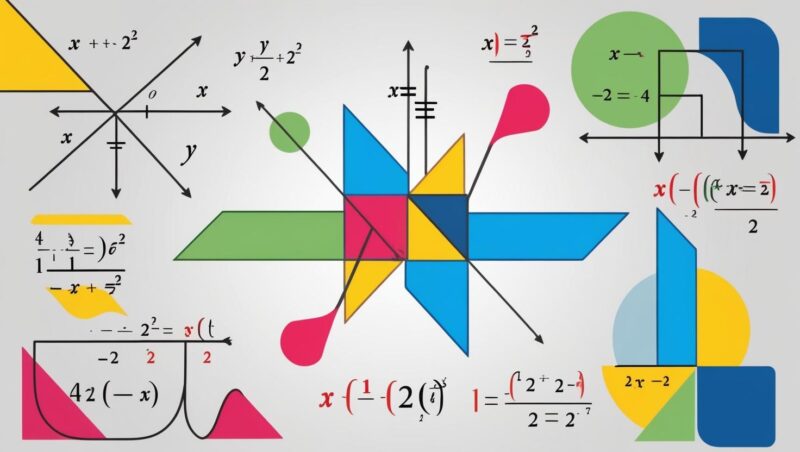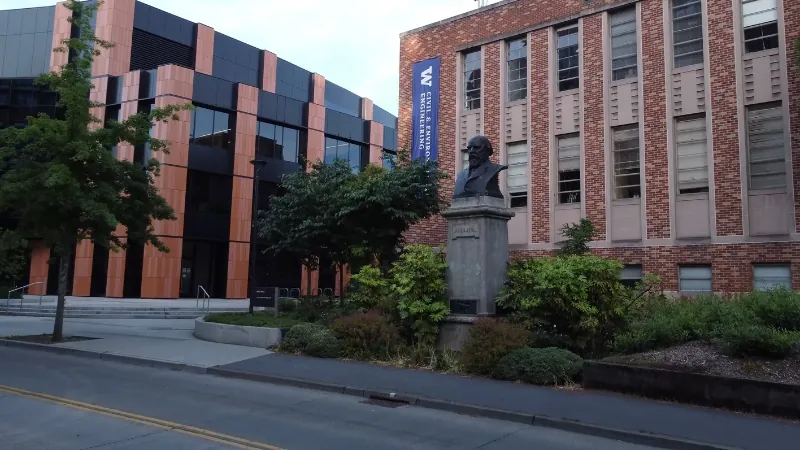
Share Post:
When it comes to mathematics, some of the world’s most prestigious universities compete at the highest level. Each of these institutions excels in research, faculty expertise, and industry impact, making it difficult to declare a single “best” university.
However, if you’re looking for pure mathematics, Princeton and the University of Chicago have historically strong programs. If applied mathematics is your focus, MIT and Stanford lead with cutting-edge research in AI, cryptography, and computational modeling.
Harvard, UC Berkeley, and Columbia also offer top-tier mathematics programs, especially for interdisciplinary studies.
No matter which university you choose, these ten schools represent the best of the best—offering unparalleled education, research opportunities, and career prospects.
University
Global Rank
US Rank
Mathematics Rank
Stanford University
#3
#1
#1
Princeton University
#18
#2
#2
Massachusetts Institute of Technology (MIT)
#2
#3
#3
Harvard University
#1
#4
#5
University of California, Berkeley
#5
#5
#8
Columbia University
#9
#6
#13
University of Washington
#7
#7
#17
University of California, Los Angeles (UCLA)
#11
#8
#19
University of Michigan
#19
#9
#20
University of Chicago
#25
#10
#26
Table of Contents
Toggle1. Stanford University
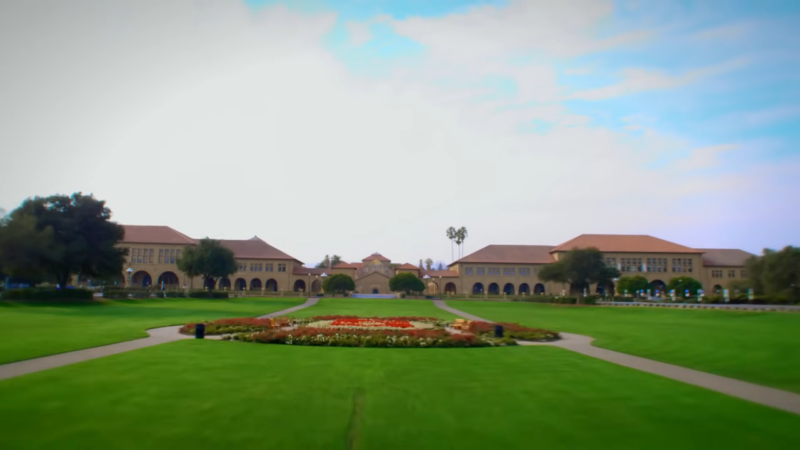
Stanford University, founded in 1885, is located in California’s Bay Area, about 30 miles south of San Francisco. It is ranked #3 globally and holds the top position in mathematics.
With over 14,500 students, Stanford offers a world-class education with strong research programs and faculty who are among the most distinguished in the field. Around 30 percent of its graduate students are international, reflecting its global influence.
Category
Ranking
Global Mathematics Rank
#1
Global Research Reputation
#3
Highly Cited Papers (Top 1%)
#2
Publications in the Top 10% Most Cited
#4
Stanford operates on a quarter system and provides housing to more than 90 percent of undergraduates and a large portion of graduate students. The university boasts an extensive library system with over 9.3 million volumes and is home to the SLAC National Accelerator Laboratory, a key research facility that attracts thousands of scientists worldwide.
Mathematics Excellence
Stanford has the top-ranked mathematics department in the world, known for its contributions to theoretical and applied mathematics. The university excels in areas such as algebraic geometry, number theory, combinatorics, and computational mathematics.
It maintains strong interdisciplinary research connections with artificial intelligence, physics, and engineering, positioning students for success in both academia and industry.
The university’s research facilities, including SLAC and the Stanford AI Lab, provide cutting-edge opportunities for mathematical modeling, optimization, and data science. With over $1 billion in annual research funding, Stanford leads innovation in multiple fields, including applied mathematics according to the Stanford University website.
Research and Global Impact
Stanford’s mathematics research is highly cited, with its publications ranking among the most influential in the world. The university is recognized for producing groundbreaking work in topology, cryptography, and financial mathematics.
The mathematics department collaborates with Silicon Valley companies, government institutions, and global research centers, giving students access to some of the best career opportunities available.
Why Stanford?
- Ranked #1 in Mathematics worldwide
- Faculty includes Fields Medalists & top researchers
- Strong AI & computational math research
- Home to SLAC National Accelerator Laboratory
- Close collaboration with Silicon Valley tech firms
2. Princeton University
- Location: Princeton, NJ, USA
- Founded: 1746
- Global University Rank: #18
- Mathematics Ranking: #2
- Total Students: 8,000
- International Students: 12% undergraduates, 40% graduates
- Total Academic Staff: Data not available
- Annual Research Funding: Not disclosed
Princeton University, founded in 1746, is one of the oldest and most prestigious institutions in the United States. Located about 50 miles southwest of New York City, it has a small yet highly selective student body, with two-thirds of its students enrolled in undergraduate programs.
Princeton follows a semester-based academic calendar, and English is the primary language of instruction.
Category
Ranking
Global Mathematics Rank
#2
Global Research Reputation
#8
Highly Cited Papers (Top 1%)
#98
Publications in the Top 10% Most Cited
#117
Princeton guarantees four years of housing for undergraduates, with nearly all students living on campus. The university operates six undergraduate residential colleges, providing academic and social support to students. Around 70% of graduate students also live in university housing.
Mathematics Excellence
Princeton University has one of the world’s best mathematics programs, ranking #2 globally according to TutorBin. The department is known for its contributions to theoretical and applied mathematics, with strengths in algebra, topology, analysis, and mathematical physics.
The university’s mathematics department has been home to some of the most influential mathematicians, including John von Neumann and Alan Turing, and continues to be at the forefront of groundbreaking research.
Princeton also has strong interdisciplinary collaborations, particularly in physics, economics, and engineering. It is affiliated with two major research laboratories:
- Princeton Plasma Physics Laboratory (PPPL) – A U.S. Department of Energy lab focusing on plasma physics and nuclear fusion.
- Geophysical Fluid Dynamics Laboratory (GFDL) – A research center specializing in climate and atmospheric modeling.
Research and Global Impact
Princeton’s mathematics research is widely cited, with a high number of publications ranked among the top in the field. The department has made significant contributions to number theory, geometry, probability theory, and mathematical finance.
Princeton’s close ties with other Ivy League institutions, as well as leading research centers worldwide, make it a hub for mathematical innovation. The university frequently collaborates with institutions such as MIT, Harvard, and the Institute for Advanced Study (IAS), one of the most prestigious mathematical research centers globally.
Why Princeton?
- Ranked #2 globally in mathematics.
- Home to world-renowned faculty, including Fields Medalists.
- Strong focus on theoretical mathematics and mathematical physics.
- Affiliated with two national research laboratories.
- Small, highly selective program with a strong faculty-student ratio.
3. Massachusetts Institute of Technology (MIT)
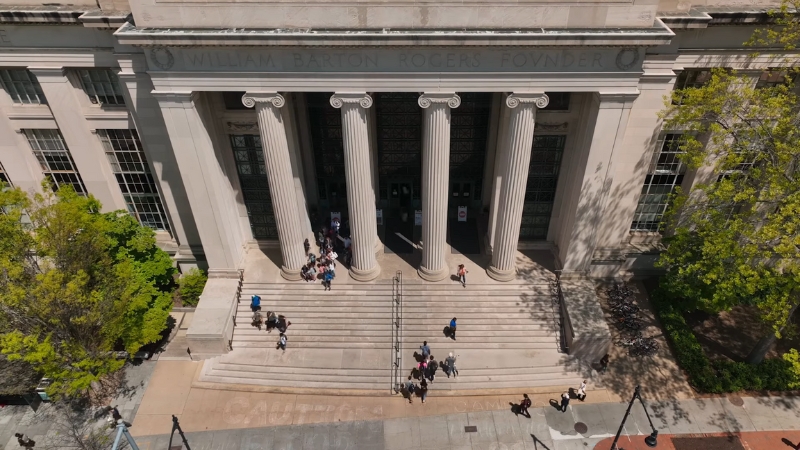
- Location: Cambridge, MA, USA
- Founded: 1861
- Global University Rank: #2
- Mathematics Ranking: #3
- Total Students: 11,085
- International Students: 3,649
- Total Academic Staff: 1,383
- Annual Research Funding: $675+ million
MIT, located in Cambridge, Massachusetts, is one of the world’s most renowned research institutions. With a strong emphasis on science, technology, engineering, and mathematics (STEM), the university has consistently ranked among the top in mathematics.
MIT follows a 4-1-4 academic calendar, which includes a unique Independent Activities Period (IAP) in January, where students engage in hands-on projects, research, and specialized coursework according to the MIT website.
Category
Ranking
Global Mathematics Rank
#3
Global Research Reputation
#2
Highly Cited Papers (Top 1%)
#9
Publications in the Top 10% Most Cited
#16
Housing is required for first-year undergraduates, and many students choose to remain on campus throughout their studies. The MIT Nuclear Reactor Laboratory is among the largest university research reactors in the U.S., offering significant opportunities for students interested in mathematical modeling and applied sciences.
Mathematics Excellence
MIT is globally recognized for its mathematical rigor and innovation, excelling in pure mathematics, computational mathematics, and mathematical physics. The department has produced Fields Medalists and Abel Prize winners and has been instrumental in advancing algebra, combinatorics, probability theory, and applied statistics.
The university fosters an interdisciplinary approach, integrating mathematics with fields such as computer science, economics, cryptography, and artificial intelligence. MIT’s strong connections to industry and government agencies provide students with research opportunities that have real-world applications.
Research at MIT is highly regarded, with nearly 90% of undergraduates participating in research through the Undergraduate Research Opportunities Program (UROP). MIT’s Lincoln Laboratory, a Department of Defense research facility, also plays a key role in advancing mathematical research in national security and technology.
Research and Global Impact
MIT’s mathematics department is known for its high-impact publications and contributions to areas such as machine learning, quantum computing, and mathematical modeling. The university’s research funding exceeds $675 million, with additional federal support for classified and applied mathematical research.
The mathematics program collaborates closely with leading research institutions, tech firms, and financial organizations, ensuring that MIT graduates are highly sought after in academia, technology, and quantitative finance.
Why MIT?
- Ranked #3 globally in mathematics.
- Strong focus on computational mathematics, applied analysis, and theoretical physics.
- Home to world-renowned faculty, including Fields Medalists.
- Interdisciplinary research with engineering, AI, and data science.
- Highly integrated with industry, government, and tech companies.
4. Harvard University
- Location: Cambridge, MA, USA
- Founded: 1636
- Global University Rank: #1
- Mathematics Ranking: #5
- Total Students: 20,050
- International Students: 4,924
- Total Academic Staff: 2,235
- Annual Research Funding: Highest in the world (Endowment exceeds $50 billion)
Harvard University is the oldest and one of the most prestigious higher education institutions in the United States. Founded in 1636, Harvard has set the standard for academic excellence and research innovation. Located in Cambridge, Massachusetts, its influence extends worldwide, with over 100 research centers across multiple disciplines.
Category
Ranking
Global Mathematics Rank
#5
Global Research Reputation
#1
Highly Cited Papers (Top 1%)
#1
Publications in the Top 10% Most Cited
#1
Harvard has the largest academic library in the world, housing over 19 million volumes across 70 libraries according to Harvard Library. The university follows a semester-based academic calendar, and the vast majority of its undergraduate students reside on campus.
Mathematics Excellence
Harvard has one of the strongest mathematics programs globally, consistently ranked among the top five. The department is renowned for its contributions to pure mathematics, number theory, combinatorics, and algebraic geometry. Harvard mathematicians have made groundbreaking advances in representation theory, topology, and mathematical physics.
The program maintains strong interdisciplinary research collaborations with fields like computer science, artificial intelligence, physics, and finance. Harvard’s mathematics faculty includes Fields Medalists and Abel Prize winners, with alumni who have gone on to become pioneers in both academia and industry.
The Harvard Center of Mathematical Sciences and Applications (CMSA) fosters collaboration between theoretical and applied mathematics, bridging research between mathematics and areas such as machine learning, bioinformatics, and quantitative finance.
Research and Global Impact
Harvard ranks #1 globally in research output, with its mathematics research among the most cited in the world. The university has made significant contributions to cryptography, financial mathematics, and mathematical logic.
Harvard’s strong industry and government connections allow mathematics students to engage in high-impact research that influences policy, finance, and technological innovation. The university collaborates with institutions like MIT, Stanford, and Princeton, making it a central hub for mathematical research and discovery.
Why Harvard?
- Ranked #5 globally in mathematics.
- World-class faculty, including Fields Medalists and Nobel laureates.
- Home to the largest academic library and leading research centers.
- Strong mathematical collaborations with AI, physics, and finance.
- Unmatched research funding and global academic influence.
5. University of California, Berkeley
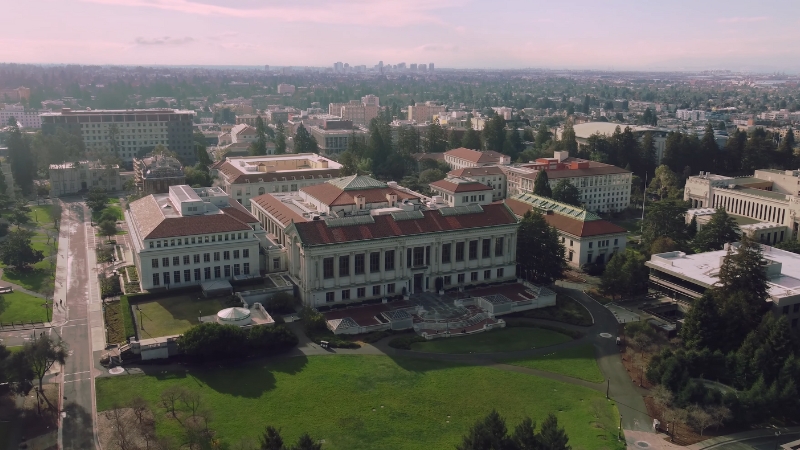
- Location: Berkeley, CA, USA
- Founded: 1868
- Global University Rank: #5
- Mathematics Ranking: #8
- Total Students: 39,991
- International Students: 8,841
- Total Academic Staff: 2,234
- Annual Research Funding: Not disclosed
The University of California, Berkeley, commonly known as UC Berkeley, is one of the most prestigious public research institutions in the world. Located 15 miles from San Francisco, the university is known for its academic excellence, research impact, and innovation.
Berkeley offers over 350 degree programs, and its mathematics department is among the best globally.
Category
Ranking
Global Mathematics Rank
#8
Global Research Reputation
#6
Highly Cited Papers (Top 1%)
#35
Publications in the Top 10% Most Cited
#39
The university follows a semester-based academic calendar, with English as the primary language of instruction. Approximately 95% of freshmen live on campus, but many graduate students choose off-campus housing.
Berkeley is home to multiple research centers and field stations, contributing to discoveries across various disciplines. The university has played a significant role in scientific advancements, including the discovery of elements like berkelium and californium.
Mathematics Excellence
UC Berkeley has one of the strongest mathematics programs in the U.S., ranking #8 globally as noted by the Times of India. The department is recognized for pioneering research in algebra, topology, combinatorics, and mathematical physics.
Berkeley’s mathematics faculty includes Fields Medalists and National Academy of Sciences members, further solidifying its reputation as a leader in the field. The program is deeply integrated with computer science, engineering, and economics, making it ideal for students interested in applied mathematics, artificial intelligence, and financial modeling.
The university also maintains strong ties with Silicon Valley, providing students with internship and research opportunities in cutting-edge technology, machine learning, and data science.
Research and Global Impact
UC Berkeley is known for high-impact research, with its mathematics department making significant contributions to theoretical and applied mathematics. The university collaborates with top institutions worldwide, including MIT, Stanford, and Harvard, ensuring students are exposed to leading research and industry trends.
Berkeley’s Simons Institute for the Theory of Computing is a world-renowned research center that connects mathematics with computing and artificial intelligence, fostering innovation in cryptography, algorithms, and optimization.
Why UC Berkeley?
- Ranked #8 globally in mathematics.
- Strong faculty, including Fields Medalists and top researchers.
- Home to the Simons Institute for the Theory of Computing.
- Strong collaborations with Silicon Valley tech companies.
- Research excellence in algebra, topology, and mathematical physics.
6. Columbia University
@cinema_sb Columbia University in the city of New York ✨ captured on iPhone 13 Pro 4k at 30fps Columbia University in new york #newyork #nyc #newyorkcity #cinemasb #columbiauniversity ♬ Caribbean Blue – Enya
- Location: New York, NY, USA
- Founded: 1754
- Global University Rank: #9
- Mathematics Ranking: #13
- Total Students: 25,914
- International Students: 9,171
- Total Academic Staff: 5,026
- Annual Research Funding: Not disclosed
Columbia University, located in the heart of Manhattan, is one of the oldest and most prestigious Ivy League institutions in the United States. Established in 1754, it has a rich tradition of academic excellence, research innovation, and global impact. The university follows a semester-based academic calendar, with English as the language of instruction.
Category
Ranking
Global Mathematics Rank
#13
Global Research Reputation
#13
Highly Cited Papers (Top 1%)
#15
Publications in the Top 10% Most Cited
#19
Columbia is known for its highly selective admissions and strong international presence, with nearly 30% of students coming from outside the U.S. More than 90% of undergraduates live on campus, while graduate students have access to university housing options according to the Columbia website.
Columbia students and faculty engage in interdisciplinary research across more than 200 centers and institutes, covering a wide range of scientific, mathematical, and technological fields.
Mathematics Excellence
Columbia University has a highly respected mathematics department, ranking #13 globally. The department is particularly strong in theoretical mathematics, including algebraic geometry, topology, and mathematical physics.
The university’s interdisciplinary approach connects mathematics with computer science, physics, and financial engineering, providing students with a broad academic foundation and industry relevance.
Columbia’s proximity to Wall Street makes it an ideal choice for students interested in financial mathematics, quantitative analysis, and risk management. Many Columbia mathematics graduates go on to work in investment banking, hedge funds, and high-frequency trading.
Research and Global Impact
Columbia is a major hub for mathematical research, with faculty and students making contributions to pure and applied mathematics, mathematical logic, and computational sciences. The university collaborates with top institutions worldwide, including MIT, Harvard, and Princeton, strengthening its research output and academic influence.
The university is also home to the Courant Institute for Mathematical Sciences at NYU, allowing Columbia students access to one of the world’s leading mathematical research centers.
Why Columbia?
- Ranked #13 globally in mathematics.
- Strong faculty in algebraic topology, mathematical physics, and logic.
- Close ties to Wall Street, offering opportunities in finance and quantitative research.
- Home to one of the largest mathematical research libraries in the U.S.
- Collaborations with leading institutions, including NYU’s Courant Institute.
7. University of Washington
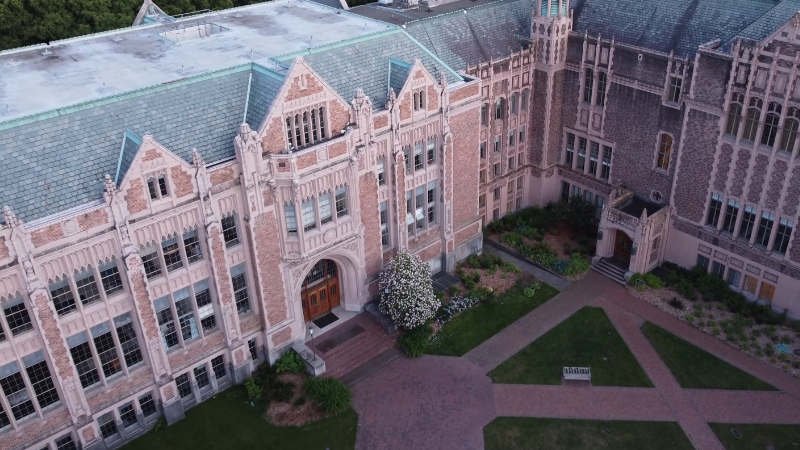
- Location: Seattle, WA, USA
- Founded: 1861
- Global University Rank: #7 (tie)
- Mathematics Ranking: #17
- Total Students: 49,485
- International Students: 8,071
- Total Academic Staff: 4,882
- Annual Research Funding: Over $1 billion
The University of Washington (UW), located in Seattle, is one of the top public research universities in the world. Established in 1861, UW has grown into a research powerhouse with over 280 specialized research centers and world-class faculty.
Category
Ranking
Global Mathematics Rank
#17
Global Research Reputation
#25
Highly Cited Papers (Top 1%)
#10
Publications in the Top 10% Most Cited
#15
The university operates on a quarter-based academic calendar, with English as the primary language of instruction. It has a large undergraduate student population, but also offers more than 370 graduate programs across various disciplines.
UW’s medical center and research facilities are among the most advanced, receiving significant funding for medical, environmental, and technological research. Its marine biology and environmental sciences programs are ranked among the best globally.
Mathematics Excellence
The mathematics department at UW is recognized for its strong research output and interdisciplinary applications. The university specializes in applied mathematics, computational sciences, and statistical modeling, making it a leading institution for students interested in machine learning, data analysis, and scientific computing.
UW is home to the Pacific Institute for the Mathematical Sciences (PIMS), which fosters collaborative research in mathematical sciences and provides students with opportunities to work on real-world problems in engineering, physics, and biology.
The university has close ties with Seattle’s booming tech industry, allowing mathematics students to explore internships and career opportunities at companies like Amazon, Microsoft, and Boeing.
Research and Global Impact
UW is a leader in applied mathematics, focusing on numerical analysis, mathematical biology, and data-driven science. The Center for Data Science at UW plays a crucial role in advancing research in AI, big data, and computational modeling.
With over $1 billion in annual research funding, UW supports high-impact projects in climate science, epidemiology, and artificial intelligence, where mathematical applications are critical.
The university frequently collaborates with other top institutions, including Stanford, UC Berkeley, and the University of Toronto, ensuring global influence and academic innovation.
Why the University of Washington?
- Ranked #17 globally in mathematics.
- Strong focus on applied mathematics, scientific computing, and data science.
- Home to the Pacific Institute for the Mathematical Sciences (PIMS).
- Close ties to Seattle’s tech industry, with opportunities at Amazon, Microsoft, and Boeing.
- Significant research funding and highly cited publications.
8. University of California, Los Angeles (UCLA)
We invite applications for a tenure-track faculty position as an Assistant Professor with outstanding potential as a research scientist, science educator, and mentor to students from underrepresented groups in the physical sciences.
Learn more at https://t.co/OLLVaKALlp pic.twitter.com/K7Ja5iQ0uU
— UCLA Mathematics (@uclamath) December 17, 2024
- Location: Los Angeles, CA, USA
- Founded: 1919
- Global University Rank: #11
- Mathematics Ranking: #19
- Total Students: 43,504
- International Students: 6,243
- Total Academic Staff: 5,996
- Annual Research Funding: Over $1 billion
The University of California, Los Angeles (UCLA) is one of the top public universities in the world, known for academic excellence, research impact, and innovation. Situated in Los Angeles, California, UCLA attracts a diverse student population and is one of the most applied-to universities in the U.S according to UCLA.
The university follows a quarter-based academic calendar, with English as the primary language of instruction.
Category
Ranking
Global Mathematics Rank
#19
Global Research Reputation
#7
Highly Cited Papers (Top 1%)
#17
Publications in the Top 10% Most Cited
#20
UCLA guarantees three years of housing for freshmen, and university housing is available for graduate students. With more than 350 research labs and institutes, UCLA remains a hub for scientific and technological advancements.
Mathematics Excellence
UCLA’s mathematics department is ranked #19 globally, with strengths in pure and applied mathematics, topology, number theory, and computational modeling. The university is known for its research in mathematical biology, cryptography, and data science, making it a strong choice for students interested in modern mathematical applications.
The department is also closely integrated with engineering, physics, and computer science, offering a well-rounded education for students pursuing interdisciplinary research. UCLA’s faculty includes leading mathematicians and members of the National Academy of Sciences, contributing to breakthroughs in statistical analysis, quantum mechanics, and artificial intelligence.
Research and Global Impact
UCLA is home to cutting-edge mathematical research centers, including the Institute for Pure and Applied Mathematics (IPAM), which collaborates with top universities, government agencies, and private companies. The university has strong research connections with NASA, the National Science Foundation (NSF), and top tech firms in Silicon Valley.
With over $1 billion in annual research funding, UCLA supports high-impact research in machine learning, computational physics, and numerical analysis. The university’s contributions to medical research, data science, and artificial intelligence demonstrate the versatility of its mathematics program.
Why UCLA?
- Ranked #19 globally in mathematics.
- Home to the Institute for Pure and Applied Mathematics (IPAM).
- Strong focus on applied mathematics, cryptography, and AI.
- Close collaboration with top tech companies and research institutions.
- High research funding and strong industry connections.
9. University of Michigan
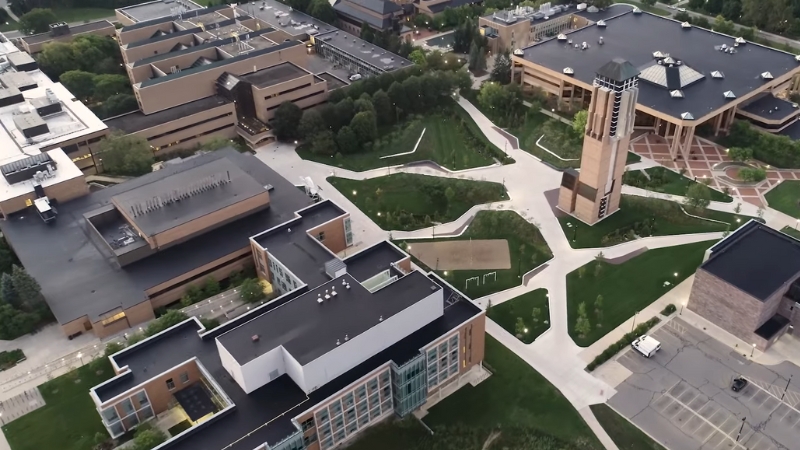
- Location: Ann Arbor, MI, USA
- Founded: 1817
- Global University Rank: #19 (tie)
- Mathematics Ranking: #20
- Total Students: 45,783
- International Students: 7,420
- Total Academic Staff: 5,632
- Annual Research Funding: Over $1 billion
The University of Michigan (U-M), located in Ann Arbor, is one of the leading public universities in the world. Established in 1817, it has a reputation for academic excellence, groundbreaking research, and strong industry partnerships.
The university follows a trimester-based academic calendar and offers over 275 degree programs across 19 schools and colleges.
Category
Ranking
Global Mathematics Rank
#20
Global Research Reputation
#12
Highly Cited Papers (Top 1%)
#16
Publications in the Top 10% Most Cited
#12
U-M has a large and diverse student population, with students from over 110 countries. It provides guaranteed housing for first-year undergraduates and has extensive graduate housing options.
The University of Michigan Hospitals and Health Centers are among the best in the nation, contributing to the university’s $1 billion+ in annual research funding, primarily focused on medical and scientific advancements.
Mathematics Excellence
The mathematics department at U-M is known for its strong foundation in pure and applied mathematics, with key strengths in algebra, geometry, topology, and mathematical physics.
The department is also closely connected with the university’s highly ranked engineering and computer science programs, offering interdisciplinary opportunities in quantitative finance, data science, and artificial intelligence.
U-M has a strong tradition in mathematical research and innovation, with faculty members frequently recognized for their contributions to number theory, combinatorics, and probability theory. The department provides collaborative research opportunities with institutions such as MIT, Stanford, and Princeton.
Research and Global Impact
U-M ranks among the top institutions for research output, with its mathematics research widely cited. The university is a leader in computational mathematics, cryptography, and mathematical modeling, contributing to industries like finance, technology, and cybersecurity.
The university is home to multiple research institutes, including the Michigan Institute for Data Science (MIDAS), which advances research in big data, machine learning, and computational methods.
Why the University of Michigan?
- Ranked #20 globally in mathematics.
- Strong faculty expertise in algebra, topology, and applied mathematics.
- Interdisciplinary research in AI, data science, and engineering.
- Home to the Michigan Institute for Data Science (MIDAS).
- High-impact research funding and industry partnerships.
10. University of Chicago
- Location: Chicago, IL, USA
- Founded: 1890
- Global University Rank: #25
- Mathematics Ranking: #26
- Total Students: 15,792
- International Students: 5,685
- Total Academic Staff: 2,557
- Annual Research Funding: Not disclosed
The University of Chicago (UChicago) is a world-renowned private research university known for its rigorous academic programs and contributions to mathematics, economics, and the sciences. Founded in 1890, it is located in Chicago’s Hyde Park neighborhood and follows a quarter-based academic calendar.
Category
Ranking
Global Mathematics Rank
#26
Global Research Reputation
#14
Highly Cited Papers (Top 1%)
#70
Publications in the Top 10% Most Cited
#82
UChicago is highly selective, with strong international representation, as 10% of undergraduates and 30% of graduate students come from outside the United States. Housing is guaranteed for all four years for undergraduates, and the university provides limited graduate housing options.
The university has multiple research facilities worldwide, including centers in Paris, Beijing, and New Delhi, and manages two U.S. Department of Energy laboratories that conduct research in energy, national security, and particle physics according to DOE.
Mathematics Excellence
The University of Chicago’s mathematics department is one of the most historically influential in the world, particularly known for its work in algebraic geometry, topology, and number theory. The department has produced several Fields Medalists and Abel Prize winners, reflecting its long-standing tradition of mathematical excellence.
The university emphasizes pure mathematics, but also integrates mathematics with physics, economics, and computational sciences. Students and researchers at UChicago frequently collaborate with experts in physics and finance, making the program particularly strong for those interested in quantum mechanics, mathematical modeling, and financial mathematics.
Research and Global Impact
UChicago is a major center for mathematical research, with strong contributions to algebraic geometry, logic, and category theory. The university has a prestigious faculty and research institutes, including the Stevanovich Center for Financial Mathematics, which applies mathematics to economic modeling and risk management.
With its strong emphasis on theoretical research, the university maintains active collaborations with institutions like Princeton, MIT, and Stanford, ensuring global influence in high-level mathematical theory.
The university’s proximity to Chicago’s financial district also provides opportunities for students interested in quantitative finance and applied mathematics.
Why the University of Chicago?
- Ranked #26 globally in mathematics.
- Home to one of the world’s most prestigious pure mathematics departments.
- Strong research focus on algebra, topology, and mathematical physics.
- Stevanovich Center for Financial Mathematics connects math with finance.
- Collaboration with major research institutions worldwide.
Related Posts:











